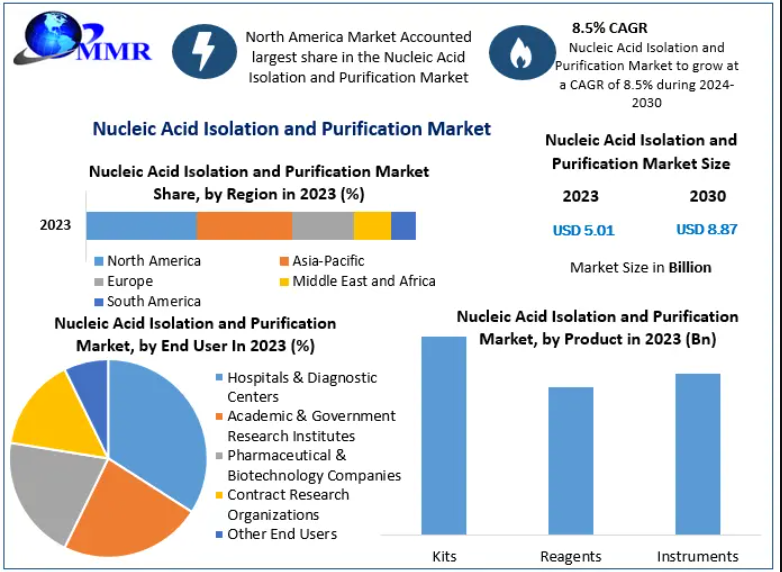Global Lightweight Conveyor Belts Market to Reach USD 7.05 Billion by 2032, Growing at a CAGR of 2.3%

MARKET INSIGHTS
The global lightweight conveyor belts market size was valued at USD 6.11 billion in 2024. The market is projected to grow from USD 6.25 billion in 2025 to USD 7.05 billion by 2032, exhibiting a CAGR of 2.3% during the forecast period.
Report Sample includes:
- Table of Contents
- List of Tables & Figures
- Charts
- Research Methodology
Get FREE Sample of this Report at https://www.intelmarketresearch.com/download-free-sample/13432/lightweight-conveyor-belts-market
Lightweight conveyor belts are advanced, versatile systems primarily used for the automated delivery of products across various industrial lines. These belts are constructed using industrial fabrics such as cotton, nylon, polyester, aramid, and blended materials as their core structure, which are then coated with polymer materials like PVC, TPU, PE, or TPEE. They are essential components in a wide range of industries including food processing, logistics, agriculture, building materials, and airport baggage handling systems.
The market's steady growth is driven by the ongoing global emphasis on automation and efficiency in material handling. The food industry remains the largest application segment, holding a dominant market share of approximately 32%, because of stringent hygiene standards and the need for reliable, easy-to-clean conveying solutions. From a material perspective, PVC belts lead the market with a share of around 31%, favored for their durability, cost-effectiveness, and versatility. Geographically, the EMEA region is the largest market, accounting for about 37% of global revenue, followed closely by the United States at 33%, reflecting mature industrial bases and high adoption rates of automated systems.
MARKET DRIVERS
Rising Demand for Lightweight and Efficient Material Handling to Boost Market Growth
The global push for operational efficiency and cost reduction across industries like manufacturing, logistics, and food processing is driving the demand for lightweight conveyor belts. These belts reduce energy consumption by up to 40% compared to traditional systems due to their reduced weight, which also minimizes the load on motors and supporting structures. Companies are increasingly adopting these systems to achieve sustainability goals and reduce carbon footprints, as they contribute to lower energy consumption and operational costs. The shift towards automation and Industry 4.0 further accelerates this adoption, as lightweight conveyor belts integrate seamlessly with automated systems, enhancing productivity and reducing manual labor. For instance, in the automotive sector, lightweight conveyor belts have enabled a 25% reduction in energy consumption while increasing production line speeds by 15%.
Growth in E-commerce and Logistics Demands Efficient Material Handling Solutions
The exponential growth of e-commerce has created an unprecedented demand for efficient material handling solutions in warehouses and distribution centers. Lightweight conveyor belts are crucial in these settings due to their ability to facilitate rapid sorting, transportation, and distribution of goods with minimal energy expenditure. These belts enable faster processing times and reduce the need for manual handling, thus decreasing labor costs and minimizing errors. The global e-commerce market, projected to reach $6.3 trillion by 2024, continues to drive innovation in conveyor technology, with lightweight belts being integral to automated sorting systems, robotic fulfillment centers, and last-mile delivery hubs. Recent data shows that warehouses using lightweight conveyor belts have achieved a 30% improvement in sorting efficiency and a 20% reduction in operational costs compared to those using traditional systems.
Moreover, the integration of Internet of Things (IoT) technology with these conveyor systems allows for real-time monitoring and predictive maintenance, further enhancing their efficiency. For example, major logistics companies like Amazon and DHL have reported a 25% increase in package handling speed after implementing advanced lightweight conveyor systems in their distribution centers.
MARKET RESTRAINTS
High Initial Investment and Maintenance Costs Pose Challenges
Despite their long-term benefits, the high initial investment required for lightweight conveyor belt systems can be a significant barrier to adoption, particularly for small and medium-sized enterprises (SMEs). These systems often require substantial upfront costs for not only the belts themselves but also the accompanying infrastructure, such as specialized support structures and control systems. Maintenance costs, while generally lower than traditional systems due to reduced wear and tear, still require specialized knowledge and parts, which can be a deterrent. For instance, a fully automated lightweight conveyor system can cost between $500,000 to $2 million depending on the scale, which is prohibitive for many smaller operations. Additionally, the need for regular maintenance to prevent issues like belt slippage or misalignment adds to the total cost of ownership, further inhibiting widespread adoption in cost-sensitive markets.
Technical Complexity and Integration Challenges Hinder Adoption
Integrating lightweight conveyor belts into existing manufacturing or logistics systems can present significant technical challenges. These systems often require precise engineering to ensure compatibility with existing machinery, which can lead to increased installation time and costs. The need for specialized training for operators and maintenance personnel further adds to the operational expenses. In some cases, companies may need to completely redesign their material flow processes to accommodate these advanced systems, leading to downtime and temporary productivity losses. For example, a major automotive manufacturer reported a 15% increase in installation time when integrating new lightweight conveyor systems due to the need for custom solutions and retrofitting existing infrastructure, delaying the realization of return on investment.
MARKET OPPORTUNITIES
Emerging Economies Present Untapped Potential for Market Expansion
Rapid industrialization in emerging economies, particularly in Asia-Pacific and Latin America, offers substantial growth opportunities for lightweight conveyor belt manufacturers. Countries like India, Brazil, and Vietnam are experiencing robust growth in manufacturing, e-commerce, and infrastructure development, all of which require efficient material handling solutions. The increasing foreign direct investment in these regions, coupled with government initiatives to improve manufacturing infrastructure, creates a favorable environment for the adoption of advanced conveyor systems. For instance, India's National Manufacturing Policy aims to increase the manufacturing sector's contribution to 25% of GDP by 2025, which will require significant investments in automation and material handling equipment. This growth is expected to generate billions of dollars in opportunities for conveyor system providers over the next decade.
Furthermore, the trend towards nearshoring and reshoring of manufacturing activities in regions like North America and Europe, partly driven by recent global supply chain disruptions, is encouraging companies to invest in advanced material handling solutions to improve local production efficiency. This trend is particularly evident in the pharmaceutical and high-tech industries, where precision and hygiene are paramount. Lightweight conveyor belts, with their compatibility with automation and cleanroom standards, are well-positioned to capitalize on this trend. For example, the European Union's NextGenerationEU recovery plan includes substantial investments in digitalization and green technologies, which include advanced material handling systems as a key component.
Technological Innovations Open New Application Areas
Continuous innovation in materials science and engineering is expanding the applications of lightweight conveyor belts. Recent developments in composite materials and smart technologies are enabling these systems to operate in more diverse environments, from extreme temperatures to corrosive environments. The integration of AI and machine learning for predictive maintenance and optimization is still in its early stages but shows promise for significantly enhancing the value proposition of these systems. For instance, the integration of IoT sensors with lightweight conveyor belts can provide real-time data on wear and tear, product flow, and potential failures, enabling predictive maintenance that can reduce downtime by up to 50%. This not only improves efficiency but also opens new application areas in sectors like aerospace, pharmaceuticals, and advanced electronics manufacturing where precision and reliability are critical.
Market Segmentation Analysis
COMPETITIVE LANDSCAPE
Key Industry Players
Companies Strive to Strengthen their Product Portfolio to Sustain Competition
The competitive landscape of the market is semi-consolidated, with large, medium, and small-size players operating in the market. Ammeraal Beltech is a leading player in the market, primarily due to its advanced product portfolio and strong global presence across Europe, North America, and other regions.
Habasit and Intralox also held a significant share of the market in 2024. The growth of these companies is attributed to their innovative product portfolio and strong industry partnerships.
Additionally, these companies' growth initiatives, geographical expansions, and new product launches are expected to grow the market share significantly over the projected period.
Meanwhile, Forbo Siegling and Bando Chemical are strengthening their market presence through significant investments in R&D, strategic partnerships, and innovative product expansions, ensuring continued growth in the competitive landscape.
List of Key Lightweight Conveyor Belts Companies Profiled
-
Ammeraal Beltech (Netherlands)
-
Habasit (Switzerland)
-
Intralox (U.S.)
-
Forbo Siegling (Germany)
-
Bando Chemical (Japan)
-
Siegling (Germany)
-
Mitsuboshi Belting (Japan)
-
Yokohama Rubber (Japan)
-
ContiTech (Germany)
Ammeraal Beltech (Netherlands)
Habasit (Switzerland)
Intralox (U.S.)
Forbo Siegling (Germany)
Bando Chemical (Japan)
Siegling (Germany)
Mitsuboshi Belting (Japan)
Yokohama Rubber (Japan)
ContiTech (Germany)
Advancements in automation technology, particularly the integration of Industry 4.0 principles, have significantly increased the demand for lightweight conveyor belts in various industries. Recent innovations in material science, such as the development of high-performance polymers and composite materials, have resulted in belts that are not only lighter but also more durable and energy-efficient. Moreover, the integration of Internet of Things (IoT) sensors has enabled real-time monitoring of belt performance, wear, and potential failures, leading to smarter maintenance schedules and reduced downtime.
Other Trends
Shift Towards Sustainable and Hygienic Solutions
The increasing focus on sustainability and hygiene across industries like food processing, pharmaceuticals, and logistics has led to a higher demand for conveyor belts that are easy to clean, resistant to microbial growth, and made from recyclable materials. This trend is further accelerated by stringent regulatory requirements and consumer demand for sustainably produced goods, pushing manufacturers to innovate in eco-friendly material choices and production processes.
E-commerce and Logistics Expansion
The exponential growth of e-commerce and the subsequent need for high-speed sorting and distribution systems have significantly driven the adoption of lightweight conveyor belts in logistics and warehouse automation. These belts enable faster package handling, reduce energy consumption due to their reduced weight, and integrate seamlessly with automated guided vehicles (AGVs) and robotic picking systems. The rise of same-day and next-day delivery services continues to push the boundaries of speed and efficiency in material handling, directly benefiting the market.
Regional Analysis: Lightweight Conveyor Belts Market
North America North America represents a leading market for lightweight conveyor belts, supported by strong manufacturing infrastructure and high adoption in food and logistics sectors. The United States accounts for approximately 65% of regional demand, driven by extensive food processing facilities, advanced logistics networks, and stringent food safety regulations. Major applications include food processing conveyor systems, packaging lines, and material handling in distribution centers. Industry Standards Leadership
The U.S. Food and Drug Administration (FDA) and USDA maintain comprehensive regulations for food contact materials, driving adoption of high-quality conveyor belts. Compliance with these standards ensures consistent demand for FDA-compliant and USDA-accepted belts in food processing and packaging. Market Concentration
The U.S. accounts for over 60% of North America's lightweight conveyor belt consumption, supported by extensive food processing infrastructure, large-scale logistics operations, and the presence of major retail and e-commerce distribution centers requiring automated material handling. Growth Drivers
Rising automation in food processing and packaging industries drives demand for reliable conveyor systems. The shift toward e-commerce has increased requirements for parcel sorting and distribution facilities. Ongoing investments in automated warehouses and food safety initiatives continue to create stable demand. Market Challenges
Market growth faces pressure from raw material price fluctuations, particularly in synthetic polymers. Competition from alternative conveying technologies and the maturity of some traditional manufacturing sectors also present challenges, though these are offset by growing e-commerce and automation trends.
Europe
Europe maintains stringent regulations on materials handling equipment, particularly in food and pharmaceutical applications. The EU's Machinery Directive and specific national regulations ensure high standards for conveyor systems, driving demand for high-performance, durable belts with low migration characteristics and cleanability.
Asia-Pacific
The Asia-Pacific region represents the largest and fastest-growing market, driven by expanding manufacturing capabilities, rapid infrastructure development, and increasing adoption of automated material handling. China's manufacturing expansion and India's growing industrial sector contribute significantly to demand.
South America
Market growth in South America is primarily driven by Brazil and Argentina's developing industrial sectors and resource extraction industries. While adoption rates are lower than in developed markets, gradual infrastructure improvements support steady demand growth.
Middle East & Africa
These regions show emerging demand patterns, particularly in GCC countries with their focus on economic diversification and industrial development. However, market penetration remains limited compared to other regions due to infrastructure development stages and different economic priorities.
This market research report offers a holistic overview of global and regional markets for the forecast period 2025–2032. It presents accurate and actionable insights based on a blend of primary and secondary research.
Key Coverage Areas:
-
â Market Overview
-
Global and regional market size (historical & forecast)
-
Growth trends and value/volume projections
-
-
â Segmentation Analysis
-
By product type or category
-
By application or usage area
-
By end-user industry
-
By distribution channel (if applicable)
-
-
â Regional Insights
-
North America, Europe, Asia-Pacific, Latin America, Middle East & Africa
-
Country-level data for key markets
-
-
â Competitive Landscape
-
Company profiles and market share analysis
-
Key strategies: M&A, partnerships, expansions
-
Product portfolio and pricing strategies
-
-
â Technology & Innovation
-
Emerging technologies and R&D trends
-
Automation, digitalization, sustainability initiatives
-
Impact of AI, IoT, or other disruptors (where applicable)
-
-
â Market Dynamics
-
Key drivers supporting market growth
-
Restraints and potential risk factors
-
Supply chain trends and challenges
-
-
â Opportunities & Recommendations
-
High-growth segments
-
Investment hotspots
-
Strategic suggestions for stakeholders
-
-
â Stakeholder Insights
-
Target audience includes manufacturers, suppliers, distributors, investors, regulators, and policymakers
-
â Market Overview
-
Global and regional market size (historical & forecast)
-
Growth trends and value/volume projections
Global and regional market size (historical & forecast)
Growth trends and value/volume projections
â Segmentation Analysis
-
By product type or category
-
By application or usage area
-
By end-user industry
-
By distribution channel (if applicable)
By product type or category
By application or usage area
By end-user industry
By distribution channel (if applicable)
â Regional Insights
-
North America, Europe, Asia-Pacific, Latin America, Middle East & Africa
-
Country-level data for key markets
North America, Europe, Asia-Pacific, Latin America, Middle East & Africa
Country-level data for key markets
â Competitive Landscape
-
Company profiles and market share analysis
-
Key strategies: M&A, partnerships, expansions
-
Product portfolio and pricing strategies
Company profiles and market share analysis
Key strategies: M&A, partnerships, expansions
Product portfolio and pricing strategies
â Technology & Innovation
-
Emerging technologies and R&D trends
-
Automation, digitalization, sustainability initiatives
-
Impact of AI, IoT, or other disruptors (where applicable)
Emerging technologies and R&D trends
Automation, digitalization, sustainability initiatives
Impact of AI, IoT, or other disruptors (where applicable)
â Market Dynamics
-
Key drivers supporting market growth
-
Restraints and potential risk factors
-
Supply chain trends and challenges
Key drivers supporting market growth
Restraints and potential risk factors
Supply chain trends and challenges
â Opportunities & Recommendations
-
High-growth segments
-
Investment hotspots
-
Strategic suggestions for stakeholders
High-growth segments
Investment hotspots
Strategic suggestions for stakeholders
â Stakeholder Insights
-
Target audience includes manufacturers, suppliers, distributors, investors, regulators, and policymakers
Target audience includes manufacturers, suppliers, distributors, investors, regulators, and policymakers
Get the Complete Report & TOC at https://www.intelmarketresearch.com/machines/13432/lightweight-conveyor-belts-market
CONTACT US:
276 5th Avenue, New York , NY 10001,United States
International: (+1) 646 781 7170
Email: help@intelmarketresearch.com
Follow Us On linkedin :- https://www.linkedin.com/company/24-market-reports
Related Links






